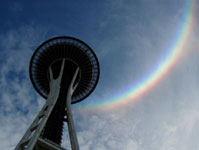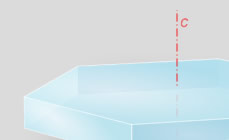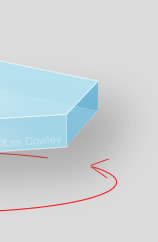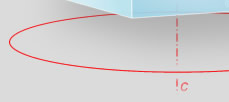
OPOD
What's New
Rays & Shadows
Water Droplets
Rainbows
Ice Halos
Contents
Crystals
Crystals & Halos
Columns & Plates
Orientations
Plate
Column
Parry
Lowitz
Random
Face numbers
Real Crystals
Diamond Dust
Pyramidal
Frequent Halos
Infrequent Halos
Multiple Displays
Other Worlds
Observing Halos
HaloSim
High Atmosphere
Links & Resources
Search - Index
123456789012345678
| Plate Orientation & Plate Halos |
|
As
plate crystals drift downwards, they become oriented in a maximum
drag condition. Their large hexagonal end faces are nearly horizontal
and the dotted axis (the crystal ‘c’ axis parallel
to the side face edges) is almost vertical. The resulting halos are called plate arcs or halos. |
 |
 |
 |
 |
 |
|
| parhelia | circumzenithal arc | circumhorizon arc | subsun - subparhelia | pillar |
|


